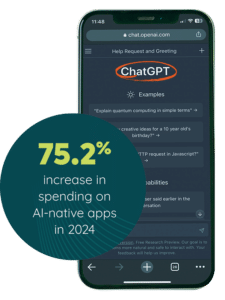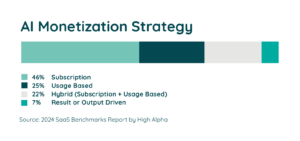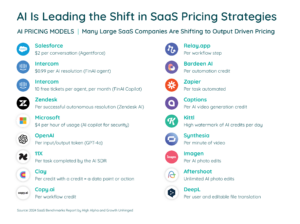
5 Things FinOps Pros Need to Know about SaaS Management
Table of Contents ToggleWhat Is Consumption-Based Pricing?What Is Value-Based Pricing?How Consumption...
Back
Back
Search for Keywords...
Blog

Table of Contents
SaaS pricing models are evolving, and businesses must adapt to stay ahead. Traditional subscription-based pricing is being replaced by consumption-based pricing (also known as usage-based pricing) and value-based pricing. These models align costs with actual usage or delivered value, making them attractive to vendors and increasingly common across the industry.
This shift presents opportunities and challenges for organizations managing SaaS expenses. While these models can provide flexibility and better cost alignment, they also introduce unpredictability, requiring a more strategic approach to budgeting and procurement. Understanding these trends is essential for controlling costs while maximizing software value.
Consumption-based pricing, also called usage-based pricing, charges customers based on how much of a service they use. Instead of paying a flat subscription fee, costs scale with activity, such as API calls, data storage, or user sessions. This model is popular in cloud computing, analytics platforms, and AI-powered tools where usage fluctuates.
For businesses, this can mean cost savings during low-usage periods but unexpected expenses when usage spikes. Effectively managing consumption-based pricing SaaS requires real-time monitoring to avoid budget overruns.
Value-based pricing SaaS models set prices based on the perceived value a product delivers rather than usage volume. Vendors determine pricing based on the impact their software has on business outcomes, such as increased revenue, efficiency, or cost savings.
For example, AI-driven customer support tools may charge based on the number of tickets resolved rather than the number of agents using the platform. This approach aims to justify higher prices by linking cost directly to business value. While appealing in theory, it can be difficult for companies to evaluate and negotiate fair pricing.
Traditional subscription models charge a fixed, recurring fee, typically monthly or annually, regardless of usage. This offers cost predictability but may lead to waste if licenses go unused.
By contrast, consumption-based pricing SaaS models charge for actual use, which can reduce waste but introduce cost variability. Value-based pricing SaaS models charge based on business impact, which can align spending with ROI but may lack transparency.
As SaaS vendors increasingly abandon rigid subscription fees, organizations must adapt their procurement strategies to optimize spending under these newer models.
2025 SaaS Management Index
Learn MoreAccording to the 2025 SaaS Management Index, spending on AI-native applications surged by 75.2% year-over-year. This explosive growth signals increased reliance on AI and a shift to the consumption-based pricing model.

AI tools depend on flexible infrastructure and on-demand computing, which makes traditional flat-rate subscriptions not enough anymore. As a result, vendors who embrace AI are turning to consumption-based pricing structures that scale with usage.
This model stands to benefit both the provider and the consumer. It helps ensure vendors are compensated for their resources, but also gives customers cost control based on their actual use. For example, generative AI platforms may charge per image generated or text edited, while predictive tools bill based on the volume of data processed.
AI is also developing hybrid models that merge subscriptions with usage-based pricing to offer clear baselines as well as scalable tiered services. This has become popular among enterprise clients who need budget scalability that doesn’t interfere with usage.
As businesses continue integrating AI across workflows, matching spend and usage is becoming critical. Consumption-based pricing helps make sure software costs actually reflect the value the product provides in real-time.
The shift toward consumption-based pricing SaaS didn’t happen overnight. As technology evolved, so did the way software was packaged and sold. Rising prices, companies paying closer attention to their tech stack, and other economic pressures have forced change across the industry.
The rise of AI-native applications and changing customer expectations have also driven vendors to rethink their pricing strategies. Now, forward-thinking SaaS companies are starting to offer usage-based and value-based pricing to better align costs with customer needs.
Across the SaaS sector, revenue growth has slowed. In 2024, “Median year-over-year growth for public SaaS companies has fallen below 20% for the first time.” This is a result of vendors favoring profitability over high growth, increasing competition in the market, and organizations being more cautious of software spending. As revenue growth slows, SaaS companies are rethinking their monetization strategies, forcing the addition of new approaches.
As more SaaS companies integrate AI into their offerings, they are rethinking their monetization strategies. While 31% of companies are not yet monetizing AI, many are actively experimenting with new pricing structures:

This aligns with Zylo’s 2025 SaaS Management Index, which notes that businesses are increasingly facing unexpected charges due to AI pricing structures. As vendors refine their models, many are moving toward usage-based billing, where costs scale based on real-time demand rather than fixed rates.
FinOps, a framework originally designed to manage cloud costs, is now extending into SaaS. According to the FinOps Foundation, organizations that apply FinOps practices to SaaS spending gain better visibility into software usage, reduce waste, and optimize licensing strategies.
Traditionally, SaaS spending has been managed as a static operational cost. Organizations pay fixed subscription fees regardless of usage. As more SaaS vendors adopt consumption pricing, IT and SAM leaders have an opportunity to learn and implement FinOps practices to manage their SaaS applications.
The 2025 SaaS Management Index by Zylo reports that:
These insights highlight the growing complexity of SaaS cost management and the need for real-time monitoring and proactive cost optimization—which FinOps practices facilitate. In 2025, we anticipate SaaS Management and FinOps will begin to converge, catalyzed by AI and consumption-based apps.
Applications that involve variable workloads, demanding infrastructure, or output-based operations are commonly priced by consumption. For example:
In each of these options, software usage and business value are linked. This allows vendors to align pricing with actual customer behavior, while offering flexibility and transparency at the same time.
SaaS vendors are using consumption-based pricing more often to align with actual usage, which offers buyers greater flexibility and cost control. You will commonly see these types of pricing models:
Each of these models calls for clear and well-communicated expectations between buyers and vendors, especially when pricing is variable. Successful implementation depends on transparent contract terms, real-time usage monitoring, and regular reviews to ensure team and budgetary alignment.
The consumption-based SaaS pricing model offers greater flexibility and cost alignment but also presents budget predictability and cost control challenges. As more vendors adopt usage-based pricing, businesses must evaluate whether this model meets their needs and how to manage its risks effectively.
As consumption-based pricing SaaS becomes more common, businesses must decide if its flexibility outweighs the risks of cost variability. Companies with strong SaaS Management strategies and real-time cost monitoring can benefit from the efficiency of usage-based pricing. However, those without visibility into their software spend may struggle with unpredictable costs and budget fluctuations.
Though consumption-based pricing models offer flexibility, they also bring about challenges for both vendors and buyers. Unpredictable costs, complicated billing, and lack of usage visibility can make a difference between adoption and satisfaction to wasted effort, and zero usage.
Common challenges include:
Budget volatility is one of the biggest issues. Costs can rise without much warning during periods of high usage. To prevent this, businesses need access to real-time data, automated alerts, and effective forecasting tools.
Pricing complexity can also create unnecessary friction. When pricing is based on multiple metrics (such as API calls, storage, and processing time), buyers tend to struggle to estimate expenses. Vendors can improve adoption by offering transparent rate cards, usage calculators, and simplified billing summaries.
Internal misalignment between finance, IT, and procurement teams is another setback to overcome. Implementing FinOps practices can improve collaboration and visibility, especially when it comes to SaaS cost tracking.
On the vendor side, revenue forecasting can become far more difficult when income fluctuates with customer usage. Using historical consumption data and predictive analytics can help smooth out cash flow projections.
Overconsumption by users can inflate costs. Usage caps, throttling mechanisms, and routine training help control spending. Addressing these obstacles as soon as possible can help ensure businesses realize the benefits of consumption-based pricing SaaS without exposing themselves to undue financial risk.
As the SaaS landscape evolves, many companies are adopting consumption-based and value-based pricing models to better align with customer usage and perceived value. Below are notable examples illustrating how these models are implemented across various platforms.

These examples demonstrate how SaaS companies are innovating their pricing strategies to better reflect usage patterns and the value delivered to customers. As noted in the 2024 SaaS Benchmarks Report by High Alpha, nearly 70% of companies with AI products are monetizing or testing monetization strategies, with a significant number exploring subscription, usage-based, and hybrid pricing models.
Industry experts like Kyle Poyar have observed that while traditional subscription-based pricing remains prevalent, there’s a notable shift toward usage-based and outcome-driven models, especially among AI-native companies. This trend reflects a broader movement towards pricing strategies that closely align with the value delivered to customers.
“Customers are fed up with the legacy SaaS pricing of the past: buying seats they don’t need, getting locked into long-term commitments, and seeing SaaS become shelfware. Wasn’t SaaS supposed to solve our shelfware problem? The next generation of AI disruptors are rethinking monetization to (finally) connect price with the work delivered by AI and the outcomes this unlocks.”
— Kyle Poyar, Co-founder and Operating Partner at Tremont
By adopting these flexible pricing models, SaaS companies aim to provide more tailored solutions that meet the diverse needs of their customer base, fostering stronger relationships and promoting sustainable growth.
While traditional subscription models still dominate, more SaaS vendors are experimenting with consumption-based pricing, particularly for AI-driven services. As this shift gains traction, companies must refine their SaaS management strategies to control costs effectively.
As SaaS vendors refine their monetization strategies, we’ll see continued movement toward dynamic, real-time pricing models. Both consumption-based and value-based pricing for SaaS will start to become the industry standard. This transformation will require organizations to rethink how they manage and forecast software costs.
SaaS vendors are increasingly aligning their pricing models with FinOps best practices, offering more flexible, scalable pricing structures that reflect actual consumption. This shift is being driven by several key factors:
In addition to consumption-based models, SaaS vendors are increasingly adopting value-based pricing for SaaS, which ties cost directly to business outcomes. Increasingly, SaaS companies that align pricing with customer-perceived value achieve higher revenue and lower churn rates. Examples of value-based pricing in action include:
This pricing approach ensures customers pay for results, not just access, making it increasingly attractive for companies seeking to optimize their software expenses.
By preparing for these changes, organizations can stay ahead of the curve and avoid the cost pitfalls often accompanying consumption-based pricing SaaS.
The shift toward consumption- and value-based pricing is reshaping how businesses manage SaaS costs. While these models offer greater flexibility and alignment with actual usage, they also introduce new challenges in cost predictability and financial planning. As AI-native applications continue to drive pricing innovation, companies must adapt by developing smarter SaaS Management strategies, leveraging real-time cost tracking, and ensuring they only pay for the value they receive.
Navigating this evolving SaaS pricing landscape requires data-driven insights and proactive cost management. Zylo’s platform gives you access to exclusive benchmarks, expert analysis, and real-world data to help you make informed decisions about your software investments.
Stay ahead of rising SaaS costs. Using the data in the 2025 SaaS Management Index, you can benchmark your SaaS spending, optimize your portfolio, and ensure your organization is prepared for the next wave of pricing changes. Get the full report today to gain deeper visibility, reduce costs, and take control of your SaaS environment.

Table of Contents ToggleWhat Is Consumption-Based Pricing?What Is Value-Based Pricing?How Consumption...

Table of Contents ToggleWhat Is Usage-Based Pricing, and Why Now?How Usage-Based...

Table of Contents ToggleDefining ITAM, SAM, and FinOpsHow FinOps and ITAM...

Table of Contents Toggle3 Key AI Risks for SaaS ManagementRisk #1:...
| Cookie | Duration | Description |
|---|---|---|
| cookielawinfo-checkbox-analytics | 11 months | This cookie is set by GDPR Cookie Consent plugin. The cookie is used to store the user consent for the cookies in the category "Analytics". |
| cookielawinfo-checkbox-functional | 11 months | The cookie is set by GDPR cookie consent to record the user consent for the cookies in the category "Functional". |
| cookielawinfo-checkbox-necessary | 11 months | This cookie is set by GDPR Cookie Consent plugin. The cookies is used to store the user consent for the cookies in the category "Necessary". |
| cookielawinfo-checkbox-others | 11 months | This cookie is set by GDPR Cookie Consent plugin. The cookie is used to store the user consent for the cookies in the category "Other. |
| cookielawinfo-checkbox-performance | 11 months | This cookie is set by GDPR Cookie Consent plugin. The cookie is used to store the user consent for the cookies in the category "Performance". |
| viewed_cookie_policy | 11 months | The cookie is set by the GDPR Cookie Consent plugin and is used to store whether or not user has consented to the use of cookies. It does not store any personal data. |
